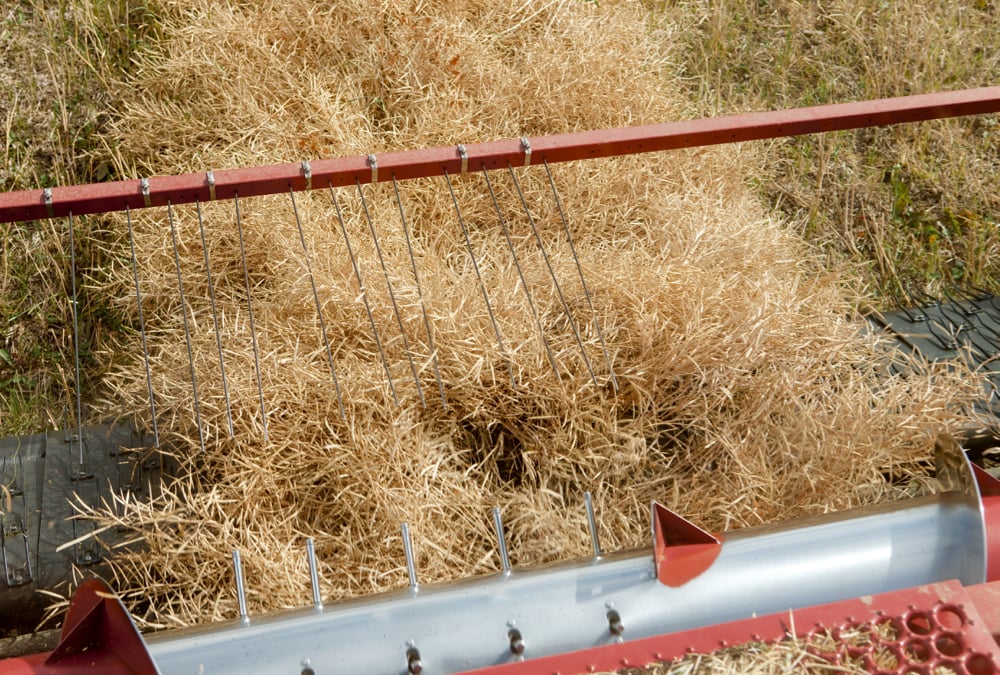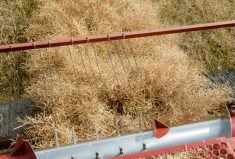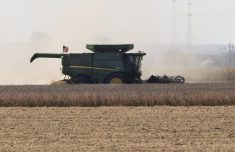REGINA — Timing fungicide properly is critical to control.
Whether it is dealing with fusarium head blight in cereals or protecting canola yields, applying products before or after the correct stage for control determines whether or not the investment in the product will pay off.
When it comes to fusarium, the lateness of seeding for much of the crop in Saskatchewan, western Manitoba and southeastern Alberta has put wheat crops in vulnerable window of warm weather and high humidity.
Rain continues to come in the form of showers for much the region, creating conditions favourable for the growth of fusarium graminearum.
Read Also

Alberta harvest wrapping up: report
Harvest operations advanced to 96 per cent complete in Alberta as of Oct. 7, with only a few late-seeded cereal and canola fields remaining, according to the latest provincial crop report.
Last year producers across the West ran into issues with cereals flowering during high humidity and moderate temperatures. The same conditions that promote high yields also provide habitat for disease.
“It was a tough year for fusarium. Even when you are planting resistant varieties, there is no magic when the conditions are that ideal for infection,” said Jason Leitch of BASF.
While the disease has a narrow window to infect crops, it also has a narrow window where it can be prevented from infecting cereal heads.
Leitch said application timing to control the pest is really limited to when the heads are emerging from the boot and before any symptoms of disease are obvious.
“Unfortunately there aren’t any easy ways to predict the weather, but if things are looking like you might have a problem, you’ll sleep better an night knowing you took care of it,” he said.
Keeping deoxynivalenol from forming, as well as the shrunken, darkened kernels and diminished yields, means applying fungicide when 75 to 90 percent of the heads are emerged and 20 percent have started to flower.
“You want to make sure you are putting on 10 gallons or more of water. Its needs to coat the crop,” he said.
Russell Trischuk of BASF said the right nozzles aid in the process.
“The ones that apply forwards and back ensure that you coat the plant,” he said.
Phil Needham of Needham Ag Technologies in Calhoun, Kentucky advises producers on their agronomy and typically suggests his growers should be able to produce well in excess of 100 bushel spring or winter wheat in an area that is highly prone to FHB.
You have to stop of the disease before it starts taking away your yields. And you have fight it on the plant and around the head by getting your fungicide everywhere,” he said.
Timing for spraying canola crops to reduce sclerotinia is just as critical as for FHB in wheat, said Canola Council agronomist Keith Gabert.
“We’ve been getting heat, and that is good for reducing the threat of the (sclerotinia) however we’ve also got a lot of water out there in places and that means the threat is still very real. All it takes are some good morning dews and a canopy to keep this threat alive,” said Gabert.
“Good moisture means good crop prospects. And prices are doing well. That means the economic threshold for application is lower than it might otherwise be,” he said.
An investment in fungicide will likely payoff well this year, says the Alberta agronomist.
For late crops that just starting to bolt, producers still have an opportunity to control the pest. Ideally application should take place from between 20 and 45 percent flowering, with 50 percent being the end of the window and the label approved time frame.
By this point flower petals will have been shed from the middle of the plant and will already have lodged against the main stem. This creates the conditions for a sclerotinia infection that girdles that artery, killing the plant. So applications after 50 percent flower have little effect and might also enter the pre-harvest withdrawal interval for some the fungicides.
















